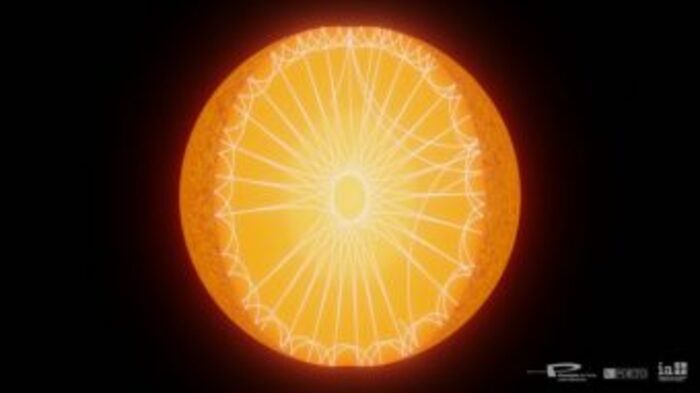We have a
new exoplanet
to one day look for potential signs of life.
Just
31 light-years away , astronomers have identified an
incredibly rare
Earth-sized world
orbiting at a distance from its star that should be hospitable to life as we know it.
That is, the exoplanet has the right conditions to promote the emergence of life.
While more than
5,200 exoplanets
have been confirmed so far, less than 1.5% of them have masses similar to Earth's, reports
Science Alert.
This is Wolf 1069b, a rocky planet with an atmosphere and water (NASA/Ames Research Center/Daniel Rutter).
And of those, perhaps a dozen are orbiting their stars at a distance where temperatures would allow liquid water to exist on the surface, not too hot to burn, not too cold to freeze.
A location in this so-called habitable zone is the first step in determining whether or not a world may be hospitable to life.
And this is what a team of astronomers led by Diana Kossakowski of the Max Planck Institute for Astronomy in Germany has discovered in a nearby red dwarf star Wolf 1069.
The newly discovered exoplanet, 1.36 times the mass of Earth and has been named
Wolf 1069b.
Illustration showing the position of Wolf 1069b in its star's habitable zone, represented by a green ring (MPIA Graphics Department/J. Neidel).
"When we analyzed the data from the star Wolf 1069, we discovered a clear, low-amplitude signal from what appears to be a planet about the mass of Earth," says Kossakowski.
"It orbits the star in 15.6 days at a distance equivalent to one-fifteenth the distance between the Earth and the Sun," says
Science Alert.
A planet half day and half night
Although Wolf 1069b is 15 times closer to its star than Earth is to the Sun, the radiation it receives is about
65 percent
that Earth receives from the Sun.
At this level, a bare, rocky, Mercury-like Wolf 1069b should have a temperature of around minus
23 degrees Celsius
.
Because the habitable zone of red dwarf stars is so close to the star, most potentially habitable red dwarf exoplanets are tidally locked.
That means that
one side is in permanent day and the other in permanent night.
Wolf 1069b simulated surface temperature map.
Liquid water could exist within the red circle (Kossakowski et al., A&A, 2023).
However, all is not lost.
Research shows that such worlds may still be habitable and a simulated temperature map of Wolf 1069b shows that liquid water is likely in the region directly facing the star, says
Science Alert.
Unfortunately, we'll have to wait to find out more: Wolf 1069b won't pass between us and its star for ten years, which means we currently have no way to probe it for an atmosphere.
look also
Sex, drugs and rock: the 20 most famous groupies in history
look also
They discover a new species of blind unicorn fish in a cave
look also
They report the world's first case of Alzheimer's in a 19-year-old patient
GML











/cloudfront-eu-central-1.images.arcpublishing.com/prisa/KMEYMJKESBAZBE4MRBAM4TGHIQ.jpg)


